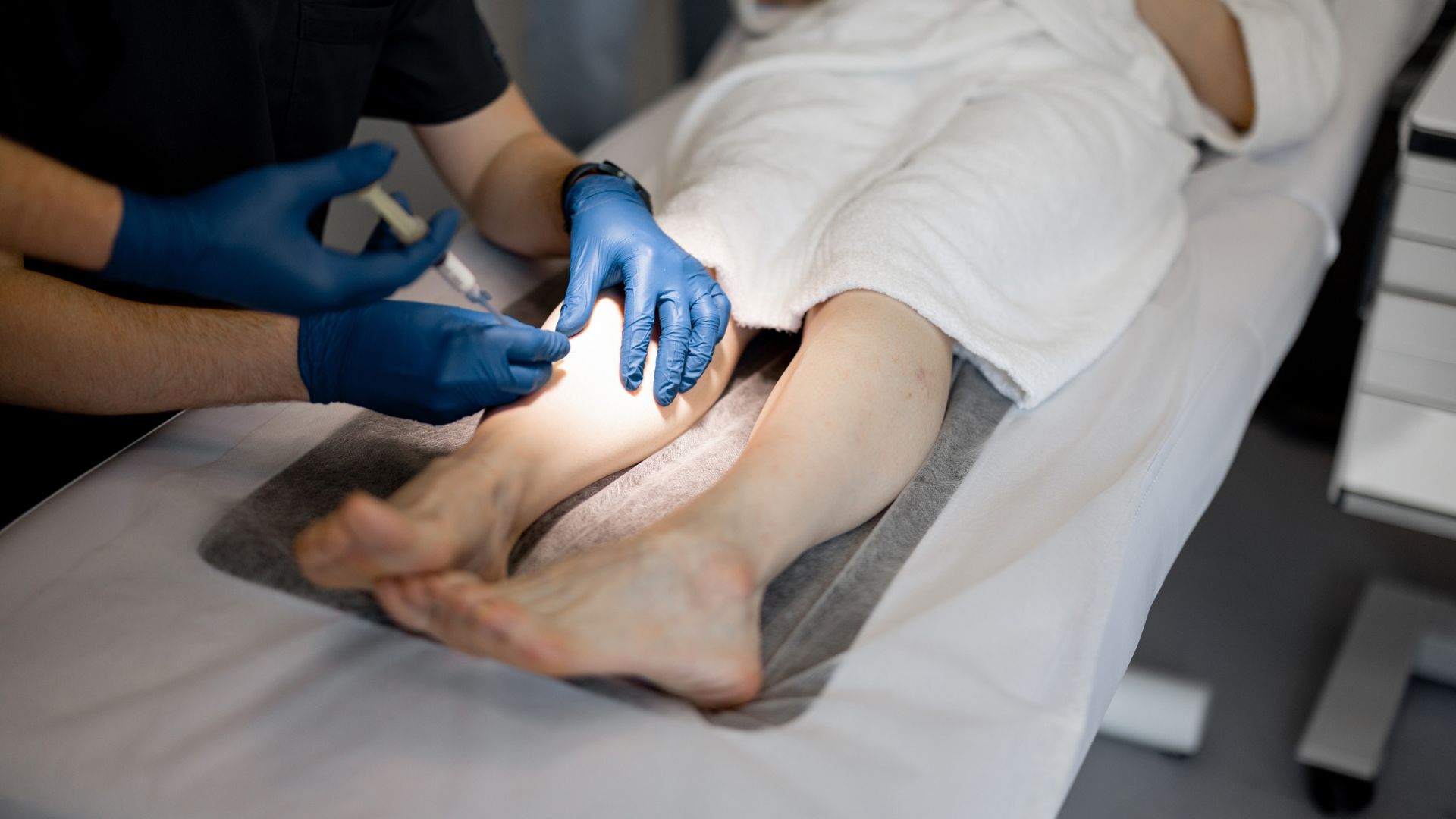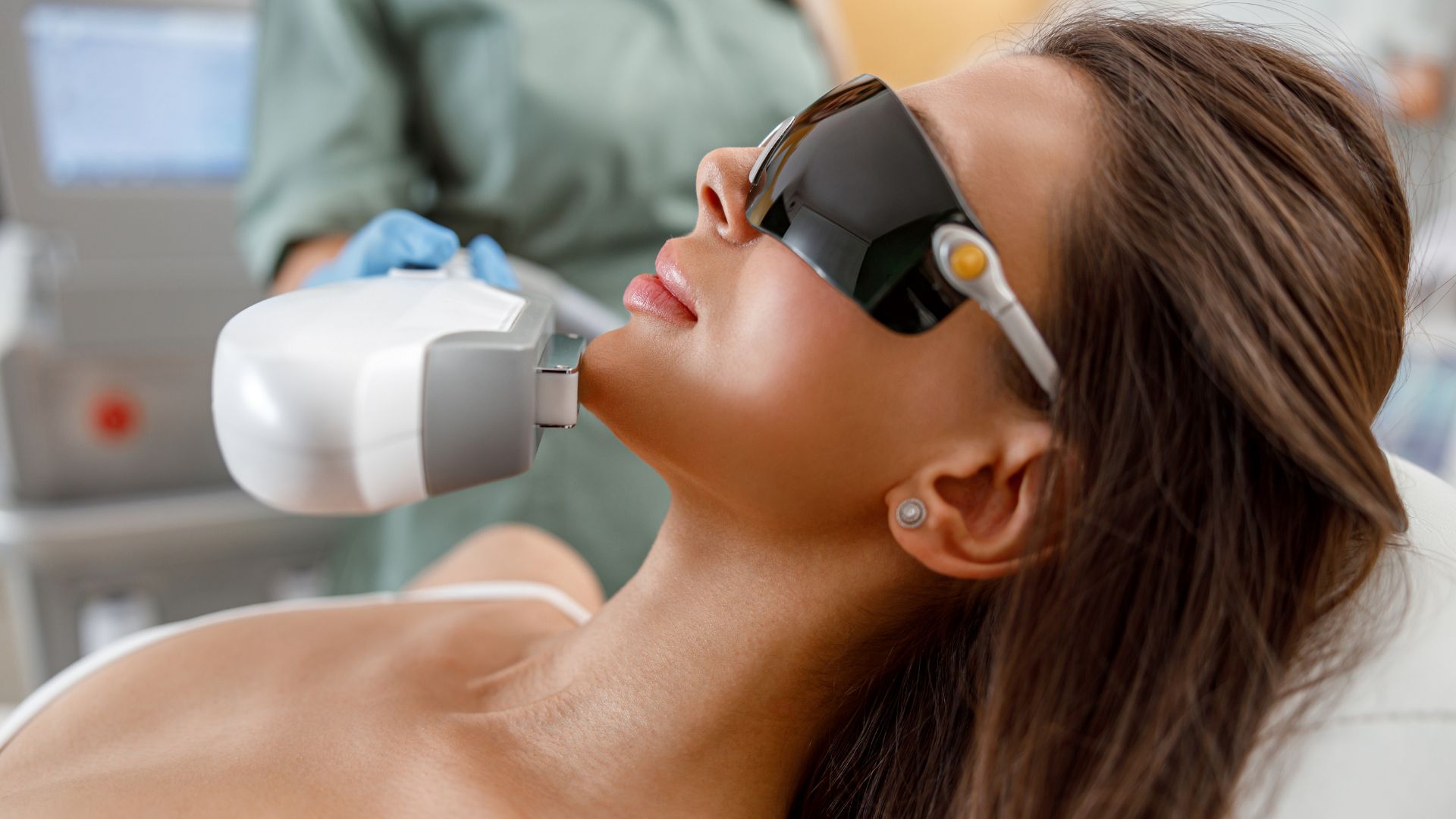
Laser Vein Treatment: Professional Insights for Aesthetic Success
Laser vein treatments have become a highly sought-after solution for individuals dealing with unsightly veins, such as spider veins and varicose veins. In 2020, over 168,000 laser vein treatments were performed in the United States, according to the American Society of Plastic Surgeons (ASPS). These treatments offer an effective, minimally invasive option for patients looking to improve their appearance and reduce the discomfort associated with vascular issues.
Specialized training for licensed medical professionals is crucial in the field of aesthetic medicine. As laser vein treatments involve sophisticated laser technology and precise techniques, a thorough understanding of vascular anatomy and laser applications is essential.
As the field of aesthetic medicine continues to grow, so does the need for specialized training in procedures like laser vein treatment. In this article, we will explore:




- What is laser vein treatment and its mechanism of action.
- Technologies and techniques used in laser vein treatments.
- Detailed insights into the procedure, from patient assessment to post-treatment care.
- How Aesthetics Medical Training (AMT) can help licensed medical professionals gain the skills and knowledge they need to excel in this field.

Understanding Laser Vein Treatment
Laser vein treatment is a non-invasive medical procedure used to remove unsightly veins such as spider veins and varicose veins. This treatment involves using a focused beam of light (laser) to deliver precise bursts of energy to the targeted vein without harming the surrounding tissue.Explanation of the Procedure
During a laser vein treatment, a healthcare provider directs a laser to the affected veins through the skin. The laser emits a wavelength of light absorbed by the blood vessels, causing the blood within them to coagulate, leading to the collapse and eventual absorption of the vein by the body. This process redirects blood flow to healthy veins, improving circulation and the skin’s appearance.Types of Veins Treated
- Spider Veins: Small, fine veins that can appear red, blue, or purple. They are typically visible on the legs and face.
- Varicose Veins: Larger, raised, and swollen blood vessels that twist and turn, usually found on the legs. They can be more than just a cosmetic concern, causing discomfort and other symptoms.
Mechanism of Action
The mechanism of action in laser therapy involves the absorption of the laser light by hemoglobin—the pigment in red blood cells. The laser’s light energy is transformed into thermal energy, which induces photocoagulation of the blood within the vein. This heat effectively destroys the vein by causing it to collapse and eventually be reabsorbed by the body, a process known as ablation.Overview of the Different Types of Lasers Used in the Treatment
- Nd Lasers: Often used for deeper veins due to their longer wavelengths, which allow for better penetration and absorption by hemoglobin and melanin.
- Diode Lasers: Commonly used for smaller spider veins, these lasers offer a range of wavelengths and can be adjusted according to the specific requirement of the vein’s depth and the patient’s skin type.
- Alexandrite Lasers: Providing a balance between penetration and absorption, they are effective for treating veins at intermediate depths.

The Importance of Technology and Technique in Laser Vein Treatments
The precision of this laser procedure relies on the ability of laser pulses to be selectively absorbed by the blood vessels without damaging the surrounding skin and tissues. This targeted approach minimizes the risk and allows for quick recovery times. The success of this treatment of spider veins hinges on using the correct wavelength and pulse duration to maximize absorption and minimize heat dispersion.Outcomes and Considerations
- Effectiveness: Most patients see significant improvement in the appearance of treated veins over several weeks to months after treatment. According to studies, laser vein treatments have a success rate of up to 98%.
- Safety and Risks: While generally safe, potential complications can include minor bruising, blistering, changes in skin pigmentation, and, very rarely, blood clots. An experienced healthcare provider can significantly mitigate these risks.
- Patient Satisfaction: High, especially when patients are properly screened and realistic expectations are set during the initial consultation.
Integrating Advanced Technology and Techniques
As technology advances, so do the techniques used in laser vein reduction treatments. Continuous education and training are vital for providers to stay abreast of the latest advancements and improve their treatment efficacy and patient safety. Advanced training courses often include comprehensive overviews of laser physics, safety protocols, and hands-on training with the latest laser systems.- Use of State-of-the-Art Lasers: Modern laser technologies, such as the Nd and diode lasers, offer adjustable settings to cater to different skin types and vein depths, allowing for customized treatments tailored to each patient’s specific needs. These lasers are designed to maximize absorption by hemoglobin and minimize damage to surrounding tissues.
- Commitment to Safety and Efficacy: Practitioners prioritize patient safety through rigorous training and adherence to the latest safety protocols. The use of laser vein treatment minimizes risks such as deep vein thrombosis, a concern with more invasive procedures. Safety measures, combined with the efficacy of the treatment, make it a preferred method for both practitioners and patients.
- Ongoing Research and Development: The field of laser vein treatment is continually evolving, with ongoing research aimed at further enhancing the effectiveness and safety of the procedures. Innovations in laser technology and techniques are regularly introduced, providing practitioners with new tools to improve patient outcomes.

Preparing for Laser Vein Treatment: Ensuring Optimal Outcomes and Patient Safety
A comprehensive patient assessment is a critical first step in the laser vein treatment process. This evaluation serves not only to identify if a patient is a suitable candidate for the procedure but also to tailor the treatment plan to individual needs. Key Aspects of the Assessment Include:- Medical History and Physical Exam: This initial screening helps ascertain the patient’s overall health, medication usage, and any previous treatments for vein issues. Vascular specialists typically use this time to detect any potential blood clotting issues or contraindications for laser treatment.
- Examination of Veins: The size, location, and depth of the problematic veins are assessed, often with the assistance of diagnostic imaging tools such as Doppler ultrasound, which provides detailed images of the vein structure and blood flow.
- Discussion of Expectations: Clear communication regarding the realistic outcomes and potential risks of the treatment is essential for patient satisfaction.
Pre-Treatment Protocols
To ensure the safety and effectiveness of the laser vein treatment, patients are advised to follow specific pre-treatment guidelines:- Medication Adjustments: Patients should avoid blood-thinning medications and certain supplements that can increase bleeding and bruising risks for a period recommended by the healthcare provider.
- Skin Preparation: The treatment area should be clean, shaved, and free of any lotions or perfumes.
- Compression Stockings: Wearing compression stockings before the procedure can prime the veins for treatment, improving outcomes.
Performing the Procedure
The laser vein treatment is performed using a series of precise and controlled steps to maximize patient comfort and treatment efficacy. Step-by-Step Guide to the Procedure:- Preparation: The skin is cleaned, and a local anesthetic is applied to minimize discomfort. In some cases, a cooling gel or device is also used to protect the skin and reduce the sensation of heat from the laser.
- Treatment: The provider uses a laser device to emit a focused beam of light that penetrates the skin and targets the vein. The laser energy heats the vein, causing it to collapse and eventually be absorbed by the body.
- Post-Treatment Care: Immediately after the procedure, compression dressings are applied to the treated area to help maintain vein closure and promote healing. Patients are given detailed instructions on post-treatment care, which typically includes continuing to wear compression stockings for a specified period.
Safety and Best Practices
Ensuring patient safety during laser vein treatment involves several best practices:- Laser Settings Adjustment: The laser settings must be precisely adjusted based on the vein’s color, size, and location, as well as the patient’s skin type. This customization helps prevent skin damage and ensures effective vein treatment.
- Monitoring: Throughout the procedure, the patient’s response to the treatment is closely monitored to adjust the technique as needed and to ensure comfort.
- Complication Management: Providers should be prepared to manage any complications that arise during the procedure, although serious complications are rare with modern laser technology.

Boost Your Expertise: Enroll Today and Transform Your Practice!
At Aesthetics Medical Training (AMT), we are dedicated to empowering licensed medical professionals to excel in the dynamic field of aesthetic medicine. Our mission is to provide comprehensive, up-to-date educational resources that enhance clinical skills and promote best practices in cosmetic procedures. With a focus on both the science and art of aesthetics, AMT prepares practitioners to meet the high expectations of today’s healthcare and beauty industries.Earning Continuing Education Units (CEUs)
Continuing education is crucial in the ever-evolving field of aesthetic medicine. AMT’s courses are accredited and recognized for CEUs, helping professionals keep their licensure current while staying abreast of the latest advancements. Our curriculum is designed to meet the continuing education requirements of various medical boards and associations, ensuring that every course not only educates but also contributes to your professional credentials.Ready to Advance Your Career?
With the aesthetic industry growing rapidly, the demand for qualified and well-trained aesthetic professionals continues to rise. By choosing Aesthetics Medical Training, you’re not just learning – you’re setting a foundation for success in one of the most exciting fields in medicine. Start your journey with AMT today and transform your practice with newfound knowledge and skills. Contact us today!
Thinking About Advancing Your Aesthetics Skills?
Contact our team today to learn how our training programs and cutting-edge technology can support your journey. Fill out the form or give us a call to get started.



